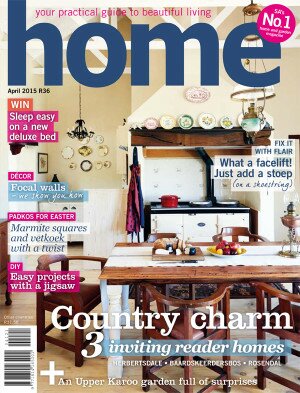-
Cast Your Own Candle Holders
Make your own rubber mould to cast as many candle holders as you desire
3 January 2015
You Will Need
- object from which you want to make a mould
- casting rubber (we used Dala Casting Rubber)
- plaster of Paris
- gauze
- glue
- container with builder’s sand
- gloves and dust mask
1 Stick your object onto a small piece of wood. We stuck ours down with a glue gun so that it could be removed easily afterwards.
2 Paint the whole object with a coat of casting rubber. Paint on a thin coat and make sure it doesn’t dam up anywhere. Leave to dry. Paint on at least five to six more coats, leaving each coat to dry properly before painting on the next.
3 In the meantime, cut the gauze into strips that you can use to cover the object. Now paint another coat of rubber over the object and place a strip of gauze over it. Paint more rubber over it.
4 Cover the whole item in this way with gauze and rubber. Leave to dry. Repeat with another layer of rubber followed by another layer of gauze and rubber. Now leave it to dry completely – this can take up to 24 hours.
5 Carefully pull the rubber shape loose from the piece of wood. Also pull the object away from the piece of wood where you glued it. Allow the rubber shape to dry from the inside.
6 Carefully pull the rubber shape away from the object. The rubber must be completely dry, otherwise it will distort.
7 Place the rubber shape upside down in the container with the builder’s sand – the sand will keep the mould in place when you pour in the plaster. Mix your plaster according to the instructions on the facing page.
HINT: Mixing The Plaster Put on a dust mask and gloves. Pour water into a container and sprinkle the plaster over it, little by little (you can work on about 250g plaster per 250ml water). Tap lightly on the side of the container to burst any air bubbles. Don’t stir. The water will become milky. Continue in this way until the gypsum is lying just under the surface of the water and doesn’t sink further. After a while, carefully stir the mixture. The plaster is ready when it has the consistency of yoghurt.
8 Make sure your container is level and then pour the plaster mixture slowly into the mould (this helps to prevent air bubbles from forming). Tap lightly along the edge of the holder to remove any air bubbles and leave to set.
9 Pull the rubber mould carefully off the plaster once it has set. Leave to stand until it has dried out; this can take a few days, depending on the size and the weather. Paint the plaster item with craft paint in a colour of your choice. Leave to dry.
Words and images: Ideas magazine






